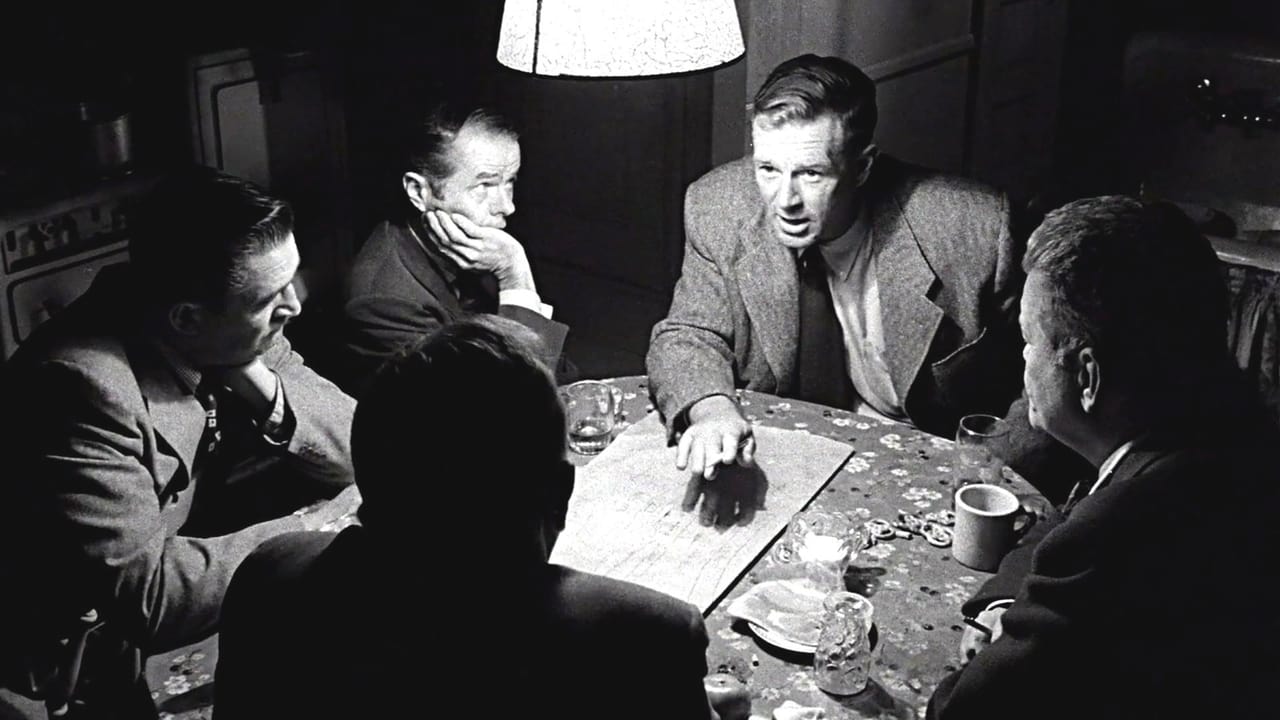Unleashing Chaos: Kubrick's Pioneering Heist Movie
When you think of iconic heist films, Stanley Kubrick's The Killing from 1956 might not be the first to roll off your tongue. But here I am, passionately unearthing this treasure with a classic movie review, because you deserve to experience cinematic gold. Directed by the genius Kubrick, in an era when he was still flexing his young auteur muscles, this crime, drama, film-noir, and thriller hybrid offers more twists than a pretzel. With an ensemble cast led by the ever-sturdy Sterling Hayden, this film promises a pulse-pounding experience that will make you question who, in fact, is the architect of chaos.
Heist 101: A Plot to Steal Your Breath Away
The Killing kicks open the gates with Johnny Clay, played with grizzled charisma by Sterling Hayden, concocting a scheme that’s as intricate as a Swiss watch. Picture this: five men, a racetrack, and a daring robbery plan that's wilder than a rodeo on caffeine. As Clay assembles his band of merry men—or perhaps, nefarious ne'er-do-wells—what follows is not just a mere heist but an orchestration of human ambitions, weaknesses, and greed. Kubrick weaves a narrative net so tight, it’s almost physically palpable. As tension ratchets and loyalties fray, this film spirals into themes of trust, betrayal, and the question: will Clay’s plan pan out, or will it unravel like an old detective’s yarn?
The Ensemble Cast: Stars Collide Under Noir Shadows
Let’s talk shop about the ensemble cast. Sterling Hayden, as the brain behind the operation, carries the weight of the world—or, at least, his ill-fated plan—on his sturdy shoulders. Hayden is akin to a force of nature; he presents cunning intelligence with a sprinkle of rugged charm, reminiscent of noir protagonists. The supporting cast includes Coleen Gray, Vince Edwards, and the delightfully gruff Jay C. Flippen, who all contribute flavors to this richly textured cinematic soup. Jay C. Flippen, particularly, steals scenes with a gravitas that makes us chuckle and gasp in admiration. It’s a classic Kubrick touch—each character winding tighter around the core plot, like planets orbiting a decadent sun.
Kubrick's Cinematic World: The Director's Trademark Flair
Stanley Kubrick, a name synonymous with innovation, took The Killing and, like a masterful sculptor, chipped away to reveal a lean, mean narrative machine. His distinct directorial fingerprint is evident in every frame—it’s like going to an art museum where each exhibit deserves its own afternoon. Kubrick and co-writer Jim Thompson turned Lionel White’s novel into a taut screenplay, creating a multi-perspective storytelling style that gives the audience a front-row seat in every corner of the heist. And oh, the cinematography! Lucien Ballard shoots the film in stark black and white, enveloping scenes in shadows that creep and crawl, reminiscent of the best film-noir moments. Every shot is a lesson in how to paint with light and dark—each frame a visual delight that captures the noir aesthetic with gusto.
Heist Thrillers: How The Killing Stacks Up
Now, here's where we dip our toes into a little cross-comparison pool. If you've ever watched Soderbergh's Oceans Eleven or the cunning caper in Inside Man, you'll find that The Killing set the stage for these genre-giants. It’s the granddad all those quirky, smoothly executed heist movies owe a drink to. Kubrick takes the bone of a conventional crime caper and dresses it in smart writing and vigorous performances—a juxtaposition to the exuberant heist styles of later years. For those keenly into cinema analysis, you’ll notice how it imbibes mystery and action with such precision, it feels like Hitchcock had a little consultation stint.
Concluding with a Heist Full of Praise
Kubrick’s The Killing is the perfect capsule of tense entertaining cinema that barely takes a breath, and why should it?! It’s a must-watch film for lovers of taut thrillers, the kind of movie that makes you bite your nails down to the quick in delightful anticipation. For anyone who loves the crime, thriller, or film-noir genres, skipping this would be like leaving the racetrack before the final stretch. So grab your popcorn, dim your lights, and let Kubrick pull you into the web of deception. Because this is one movie ride that’s worth every twist, turn, and jaw-dropping discovery.

